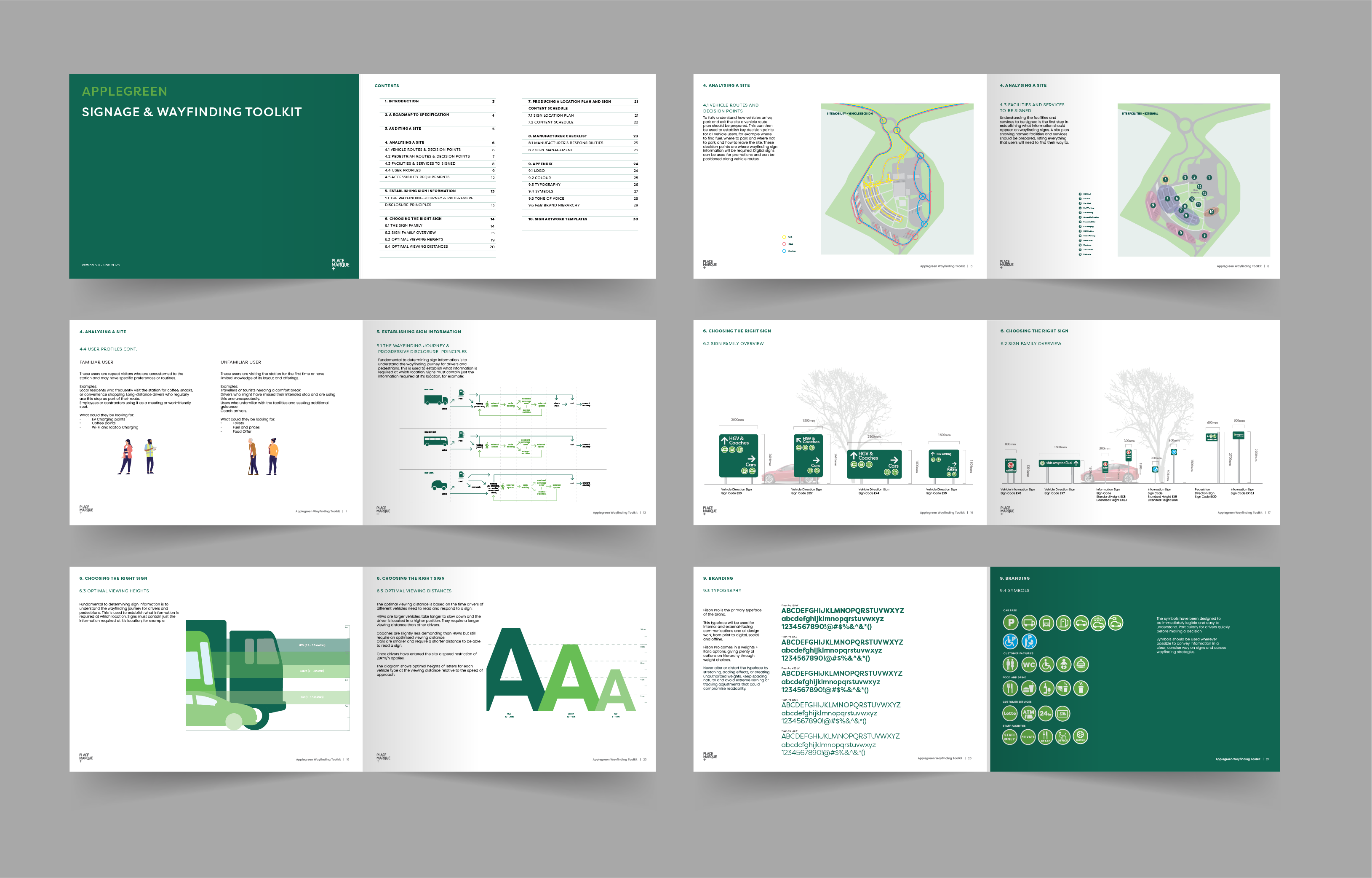
Applegreen is the major service station provider in Ireland, with nearly 200 service stations nationally. With a brand that focuses on being welcoming, light-hearted and thoughtful, Applegreen needed help communicating these principles across its vast, complex estates. We were tasked with refreshing the signs at Lusk, and drawing up a new signage strategy for Dunshaughlin, its newest service station to be built.
Service stations are particularly complex places, with innumerable different users having different reasons for visiting. Cars, coaches and HGVs all have to make different decisions, follow different routes and safely navigate to the service outlet.
On top of that, the Applegreen brand plays host to a vast number of other brands, making the place potentially visually overwhelming for users.
The brand needed a simple and clear solution to help instil legibility to the service station and safely guide users to their destinations.


We carried out an audit at Lusk, looking at existing sign locations and the information hierarchy at play across the various different brands using the site. We also assessed legibility and decision points, and who the different users were. With regular commuters, holiday makers, coach parties, logistics workers and more, there is a lot of information to communicate to a range of different users, making this one of the most complex places to navigate.
We assessed the key issues facing users ranging from a poor sense of arrival and confusing or contradictory signposting and drew up a wayfinding strategy to address the issues head on.
With the foundations in place, we developed a sign concept to simplify this complex site. Our concept needed to promote other brands using the site while remaining consistent in the way the Applegreen brand was presented.
Once the design was complete for Lusk and Dunshaughlin, we were asked to prepare a toolkit, providing artwork templates, the sign family, graphic design rules and a roadmap to specification to help with the future roll out of new signage across its vast estate nationally.


With sites as complex as this, you need a strategy to underpin the design concept and ensure that all users can safely navigate to their destination without confusion. That’s no easy feat.
Our wayfinding strategy instilled a logical route hierarchy to segregate cars and HGVs at key decision points as soon as possible, and then help people along their journey from car park to destination. We call this progressive disclosure, and it helps keep a site as complex as this legible for users.
We adopted a conversational tone of voice, gently prompting users to follow certain route. Our designs also took into account viewing distances, as the viewing height from an HGV cab and a car varies hugely.
We incorporated vertical cladding, which helped to breakup the space on these significant structures, but also brought a consistency where multiple other visual brands are being represented. Inspired by this, we then proposed the cladding be extended onto the building, bringing further consistency across the site.
At Dunshaughlin, we designed a gigantic 17m totem for the site entrance – making it, we think, our largest sign yet. Importantly, all brands needed to have equally hierarchy on the totem signs.
Internally, and particularly within the food courts which feature a vast range of different brands, we proposed hanging directional signage to separate out the Applegreen branding from the outlets. This meant signs could be suspended from within the space rather than having to compete with fascia signs. We chose individual suspended letters, rather than flat panelled signs, to minimise visual impact.